They’ve only gone and done it!
That’s right, Shimano has finally gone 12-speed in one of the most anticipated moves of the millennium. While SRAM has been dominating the drivetrain market with its superb 1×12 Eagle groupsets including XX1, X01 and GX, Shimano has been patiently waiting in the wings to bring out its entrant for the uber-massive cassette arena.
And what a cassette it is!

Yes, that is a 12-speed cassette, and it is bigger than a SRAM Eagle cassette. By one tooth. In what appears to be a beautiful ode to Spinal Tap, Shimano has one-upped its American competitor by bringing a new 10-51t cassette into the XTR groupset, producing a 510% gear range in the process.
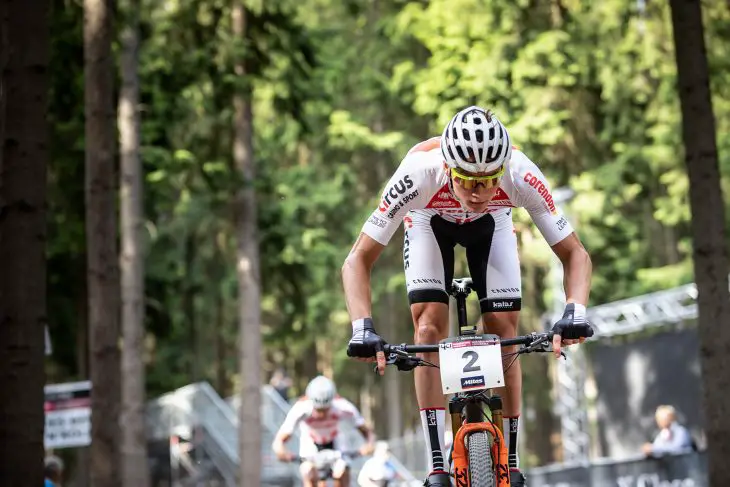

To produce such a cassette that employs a smaller 10t sprocket, Shimano could have used the SRAM XD freehub design has brought out a new smaller diameter freehub body standard called Micro Spline. For whatever reason, clearly the Japanese engineers didn’t want to make use of SRAM’s existing XD driver system, so they created their own. Micro Spline will at least be an open standard isn’t an open standard either (at this point in time), which means brands have to pay Shimano to license the design. We already know that DT Swiss is coming on board with compatible freehub bodies to convert existing hubs. As to other brands? We’ll just have to wait and see.
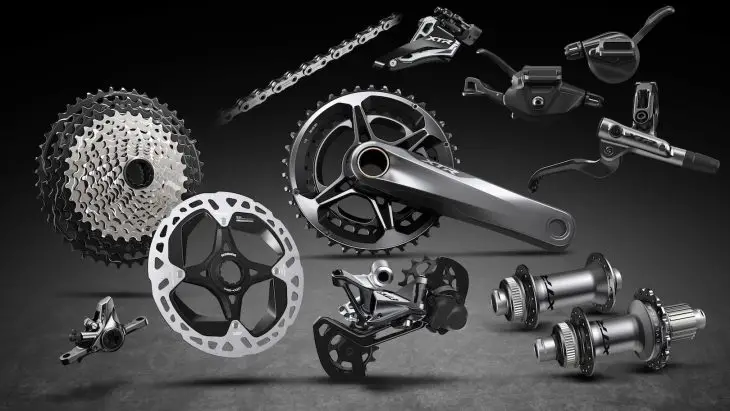
In true Shimano fashion, there will be options with XTR. Alongside that enormous cassette, there’ll be a tighter 10-45t option for XC and enduro racers who may not need such a large gearing range. And for the front derailleur fans out there, you’ll be happy to know that Shimano hasn’t killed it off just yet. XTR M9100 will offer double crankset and front derailleur options, which you’ll be able to pair with the smaller 10-45t cassette (the big 10-51t is 1x only).
That means in total, there will be four different drivetrain setups that you can choose from;
- 1×12 with a 10-51t cassette
- 1×12 with a 10-45t cassette
- 2×12 with a 10-45t cassette
- 1×11 with a 10-45t cassette
Yeah you read that last one correctly; a 1×11 drivetrain will be part of the new XTR M9100 groupset. But before you existing Shimano 1×11 users start thinking you’ll be able to mix ‘n’ match with new XTR, I’ll have to burst your bubble, because this 1×11 XTR drivetrain is a very specific piece of equipment.
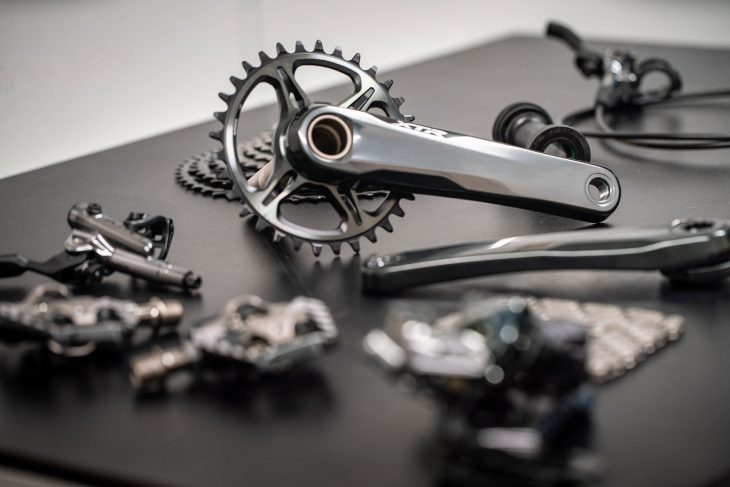
It actually requires the same new 12-speed rear mech, chain and shifter as the 1×12 setup, with a small switch in the shifter changing it from 12 clicks to 11 clicks. And the 11-speed, 10-45t cassette also requires its own special hub – one with a narrower Micro Spline freehub body that is 11-speed specific. The reason for that hub and another standard? Shimano says it has much wider hub flanges to increase stiffness, and is pitching the 1×11 XTR M9100 setup (with its specific rear hub) as the ultimate option for enduro racers wanting a stiffer and stronger rear wheel. Think Richie Rude types.
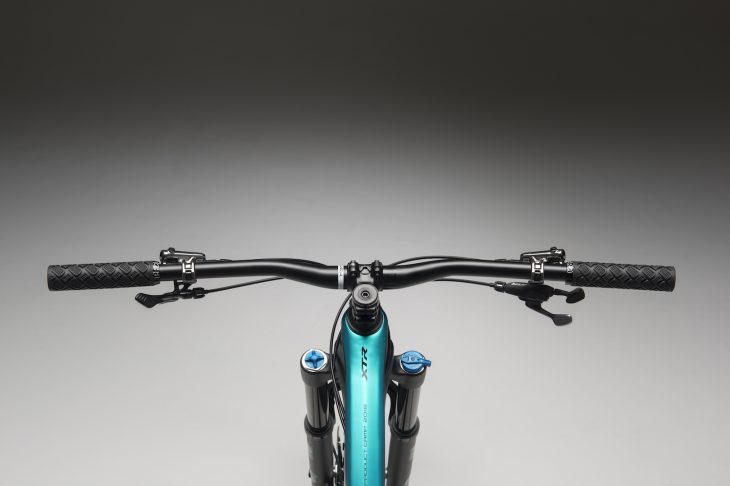
There is a tonne of other exciting updates and improvements in the new XTR groupset, including the addition of 4-piston disc brake callipers, and an XTR-level dropper post lever designed to work with the PRO Koryak and almost any other cable-activated dropper post too.
Oh, and there are more standards as well, which I’ll take you through in more detail alongside some pretty pictures.
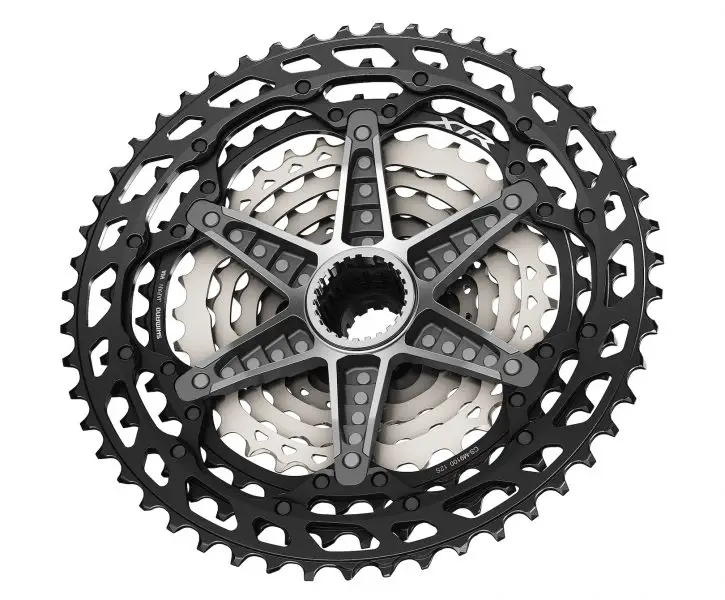
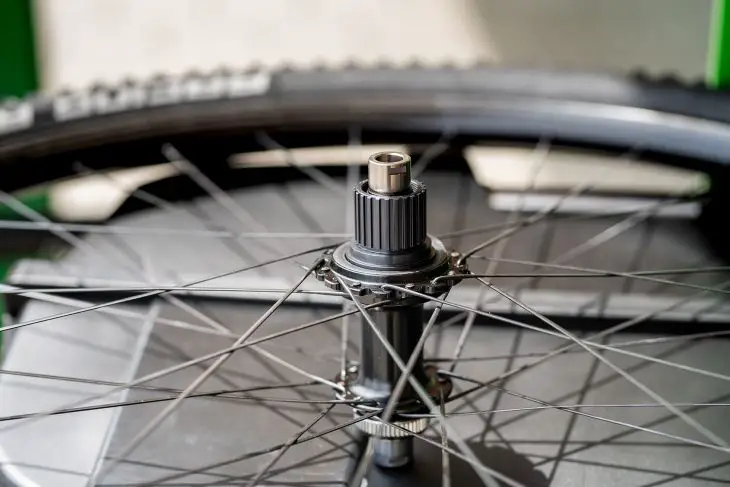
Shimano XTR M9100 Cassette & Chain
As mentioned above, there will be three new XTR cassettes; the 10-51T and 10-45T options in 12-speed, and a 10-45T cassette in 11-speed. All cassettes are constructed by using alloy for the largest sprockets, titanium for the middle cluster then steel for the remaining cogs.
In general, Shimano is marketing the tighter 10-45T cassette for racers, and the bigger 10-51T for everyday trail riders wanting the maximum gear range possible. Either way, the steps between each cog have been kept small to avoid any large jumps in the rider’s cadence. The largest gap is 6T, which is a lot tighter than Shimano’s current 11-46t XT cassette.
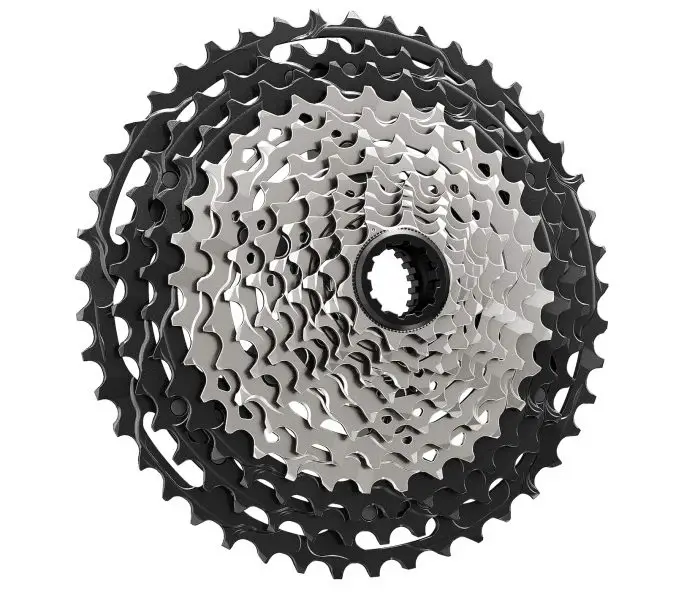
Here are the ratios for those playing at home;
- 10-51t cassette (12-speed): 10-12-14-16-18-21-24-28-33-39-45-51
- 10-45t cassette (12-speed): 10-12-14-16-18-21-24-28-32-36-40-45
- 10-45t cassette (11-speed): 10-12-14-16-18-21-24-28-33-39-45
Essentially the 11-speed cassette is the same as the 10-51t cassette, just with the biggest 51t sprocket taken off. The construction is the same, and the physical spacing between the cogs is the same – hence why it still requires a 12-speed derailleur, shifter and chain. Without that twelfth cog, it’ll obviously be lighter, though we’re still waiting for claimed weights from Shimano.
To shift over those twelve sprockets, Shimano has a new narrower 12-speed chain in the CN-M9100. There aren’t any specific tech updates over the existing XTR/Dura-Ace 11-speed chain, so you can expect hollow pins and the PTFE-plated Sil-Tec surface treatment, with Zinc Alloy inner and outer links.
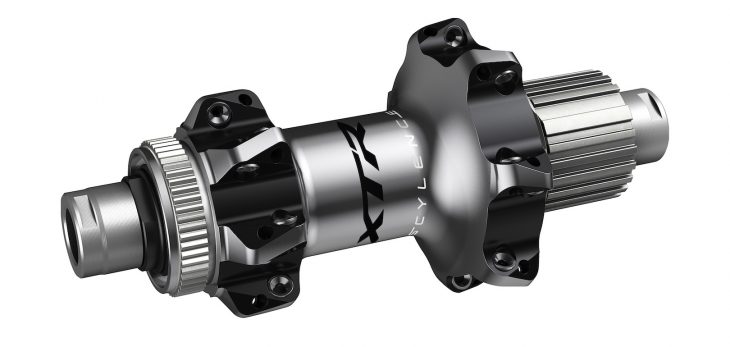
Shimano XTR HB-M9100 & M9110 Micro Spline Hubs
As mentioned above, Shimano is rolling out a new freehub body standard with the XTR M9100 groupset. Called Micro Spline, this freehub sort of looks like Shimano’s existing design, just with a smaller diameter to accommodate the smaller 10t sprocket. There appear to be more splines though, so it isn’t quite just a shrunken down version of what already exists.
Also changed is the freehub mechanism itself, which moves from a pawl system to a ratchet-based system. Shimano has given the ratchet a cunning ‘Scylence’ name, to denote the quiet-running nature of the ratchet that is said to be virtually silent and also low-drag. Engagement has gone up from 36pt on the current XTR hubs, to 48pt on the new Sylence hubs.
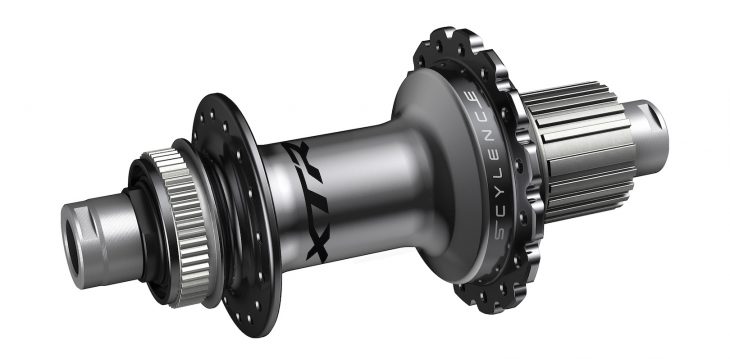
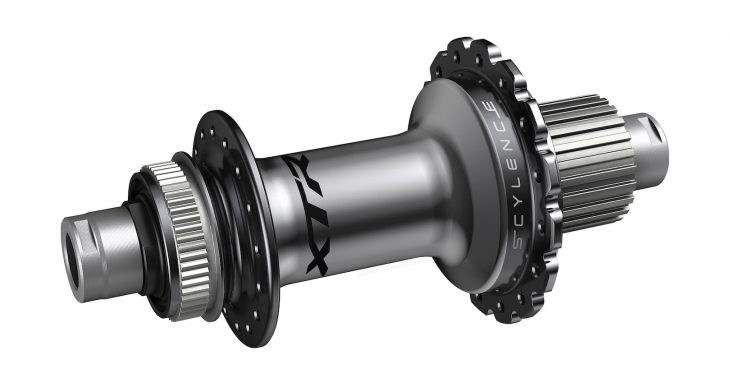
Hubs will be available in Boost and non-Boost widths. The rear hub will also be available in a 12-speed version to fit either of the new 12-speed cassettes. Then there will be the ‘wide flange’ model (shown directly above), which gets wider flanges and a narrower freehub body that is specific to the new 11-speed 10-45t cassette. We don’t have confirmation as of yet, but I’m assuming the wider flange 11-speed hub will be Boost-only.
In Shimano’s press release, there are regular drilled hubs for J-bend spokes, which will be for aftermarket custom wheel builds, and then there’s a straight-pull hub that I’m guessing will be used for complete XTR wheelsets. However, there are no complete wheelsets as part of the current XTR release, so it might be a while longer before Shimano is ready to release all-new hoops.
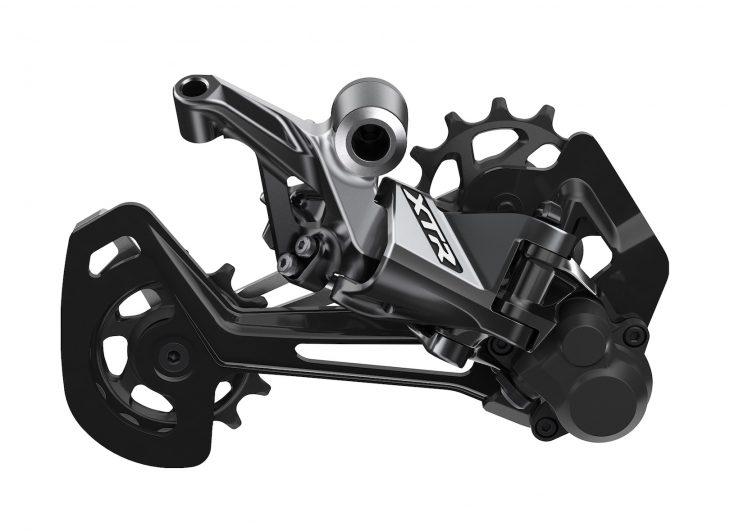
Shimano XTR RD-M9100 & M9120 Derailleurs
For the rear mech, there are three new XTR derailleurs. You’ve got a short and a long cage option for 1x setups, and then there’s a long cage option for 2×12 setups. While the cassette’s smallest sprocket has gone down from 11t to 10t, the derailleur’s jockey wheels have upsized from 11t to 13t on the new mechs, giving it a chunky appearance. As usual, there’s Shimano’s Shadow Plus one-way friction clutch mechanism, which is designed to limit chain bounce for quieter and smoother operation.
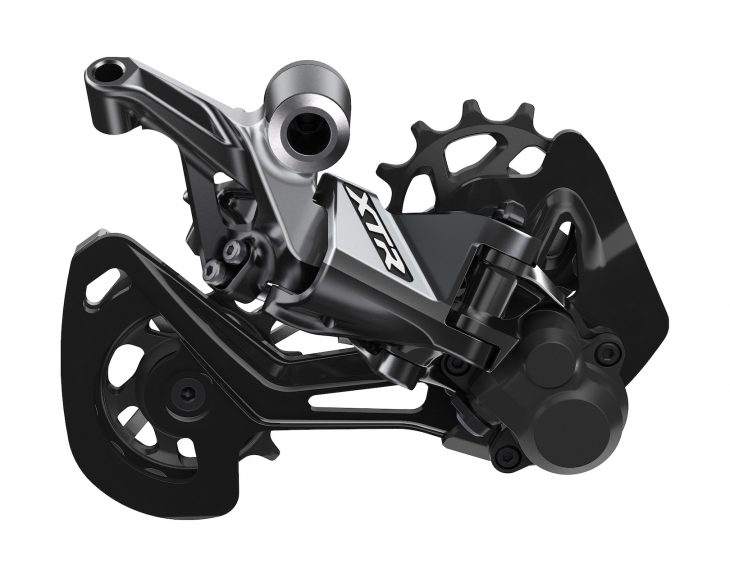
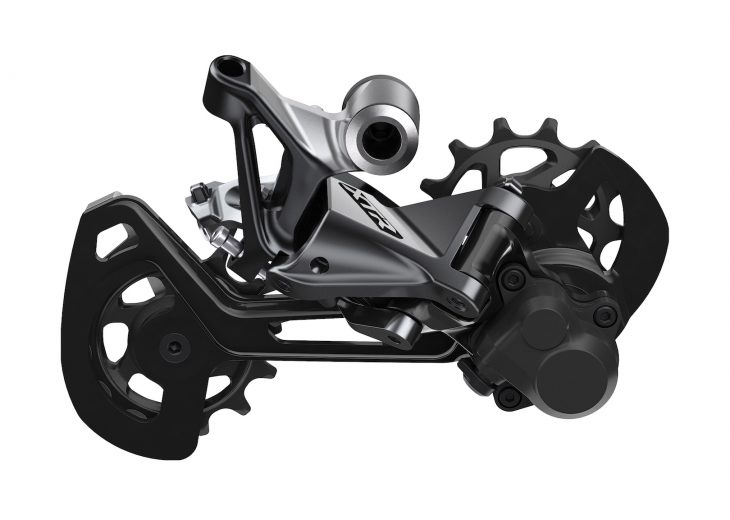
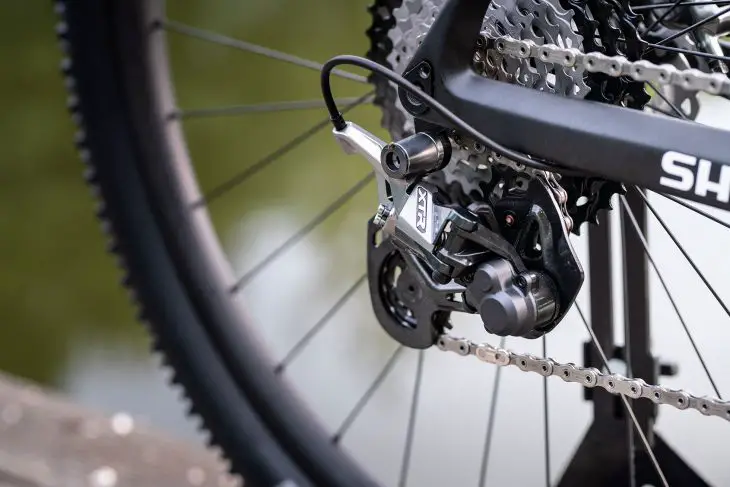
If you’re going to run the double chainring, Shimano has got three different styles of front derailleur to accommodate various frame mounting types – even though more and more bikes are being designed without the ability to take one. There’ll be D-type, E-type and M-type options, all using the Side Swing technology. More on the matching left-hand shifter below.
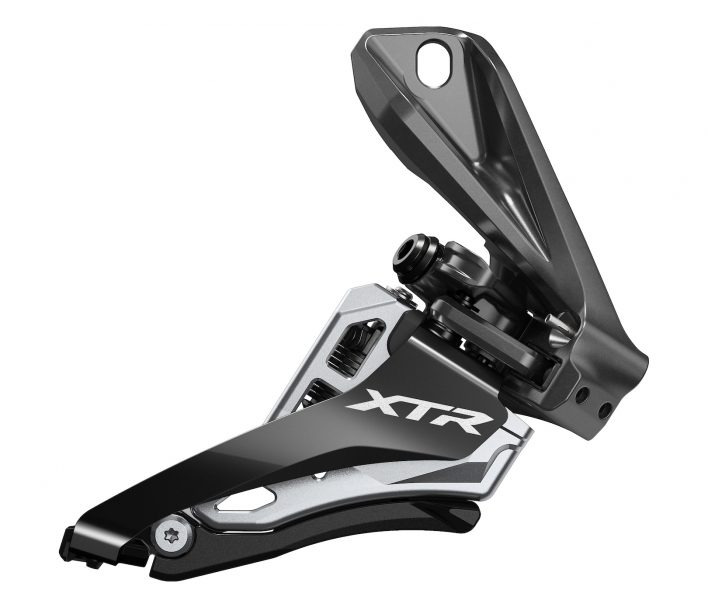
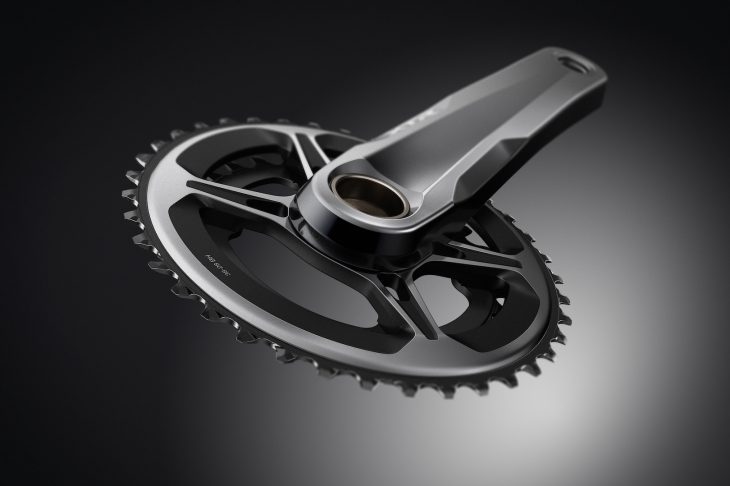
Shimano XTR FC-M9100 & M9120 Crankset
There are no drastic changes to the XTR crankset, which maintains its hollow alloy arms and steel 24mm spindle. The biggest news is the move away from the spider design of old, to a modern direct mount chainring design to accommodate both 1x and 2x chainring setups.
There are Boost and non-Boost versions, with the 1x chainrings available in sizes from 30t – 38t in two teeth increments. Shimano says it has dropped up to 80g with its direct-mount chainrings.
The double is one ratio only: 38/28t, and is designed to work only with the 10-45t cassette. There will also be a new XTR chain device available, though we don’t have images we can share with you just yet.
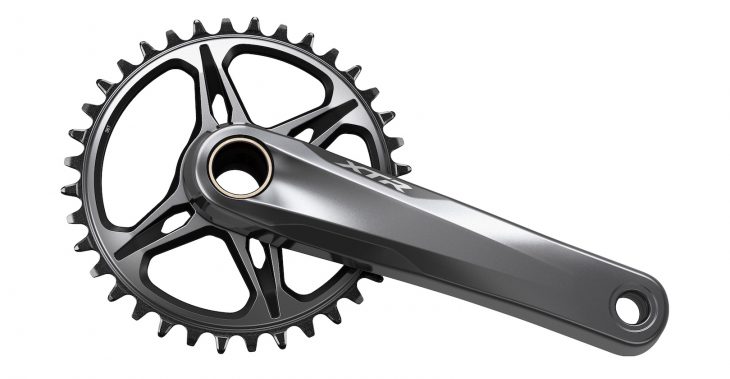
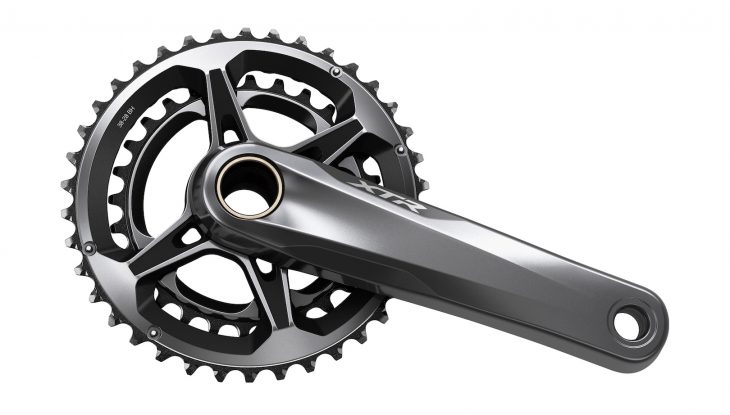
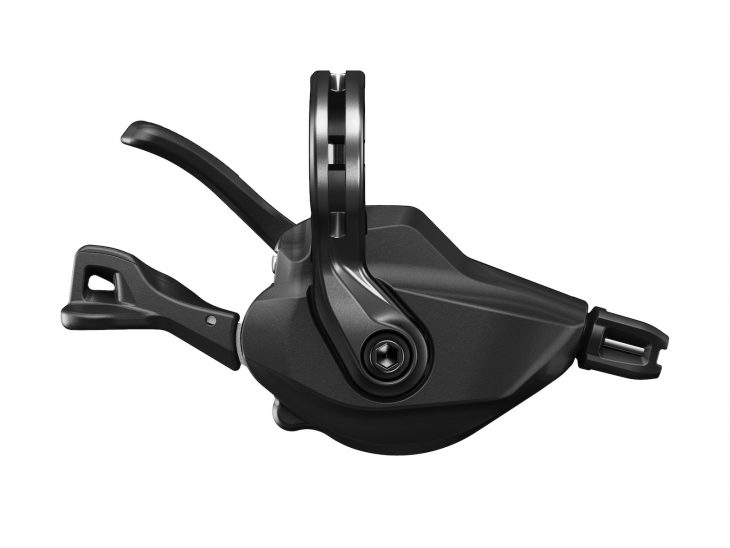
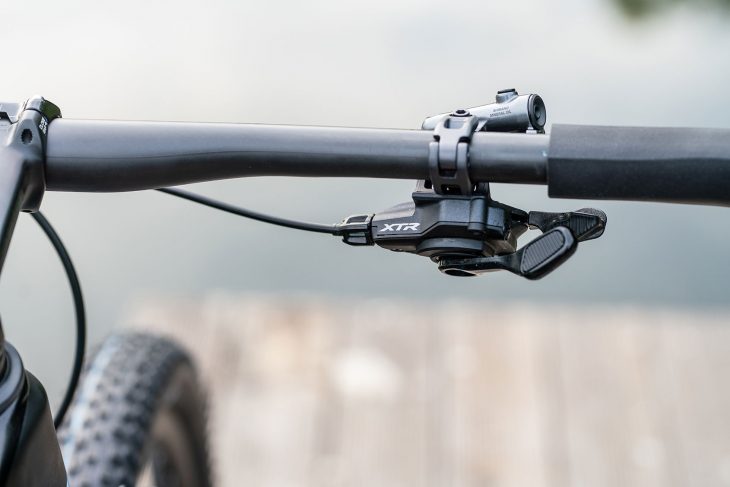
Shimano XTR M9100 Shifters
A new 12-speed trigger shifter has been added to the XTR lineup to mate with the new rear derailleurs. This shifter maintains Shimano’s technologies such as Rapidfire Plus, 2-Way Release and Multi-Release, but it does add a converter switch that allows you to flick between 12-speed and 11-speed modes – depending on which cassette you’re running.
Also updated is the I-Spec system, which is now called I-Spec EV, and is designed to integrated with the new XTR brake levers. Though it’s another new standard to add to M9100, Shimano states it is for good reason – the I-Spec EV adds more adjustability with 14mm of lateral range to the shifter, and 60° of angular rotation, so you can get the paddles into a more comfortable position. The shifter will be available in a standard bar clamp version too for those not running Shimano brake levers.
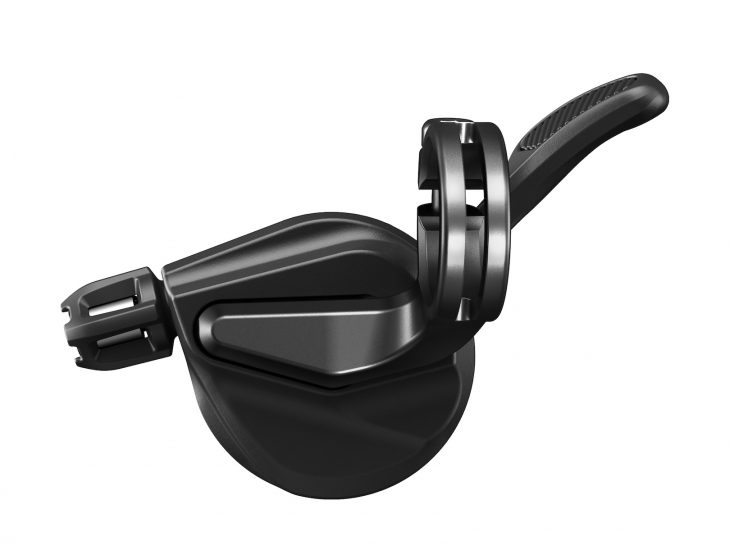
I’m not sure how popular the 2×12 option is going to be given how everything is going 1x specific these days, and that’s a shame, because Shimano’s left-hand 2x shifter is brilliant. It’s got a single paddle, because you’re only ever shifting out of one of two gears. Also available in I-Spec EV and standard bar clamp versions, the Mono Lever design sure looks neat, but for most mountain bikers, it’s probably a few years too late. No word on compatibility with existing Shimano 2x front derailleurs as of yet.
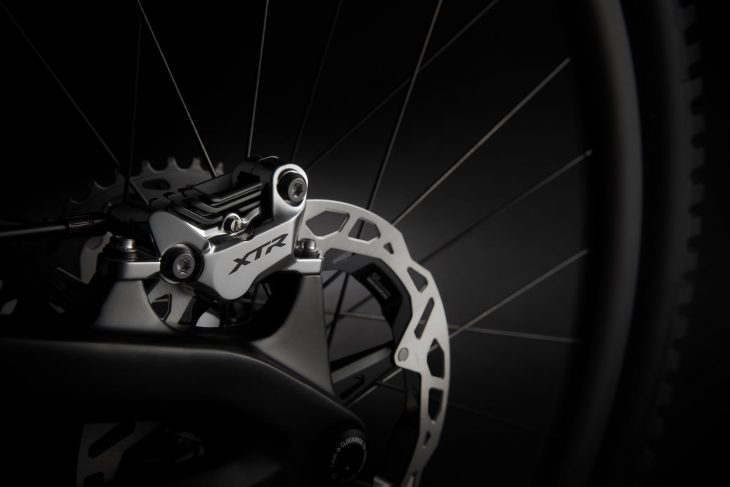
Shimano XTR BR-M9100 & M9120 Brakes
The biggest news with Shimano’s flagship disc brake is the addition of a 4-piston option – just like the recently released Deore XT 4-piston brake. Like the XT version, the XTR 4-piston calliper makes use of the same pad shape as current Saint and Zee brake callipers, but will come with its own specific Ice Tech pad complete with integrated cooling fins. Also like the XT 4-piston brakes, the XTR will come loaded with 15/17mm diameter ceramic pistons, which is the same as what you’ll find in the Saint/Zee callipers.
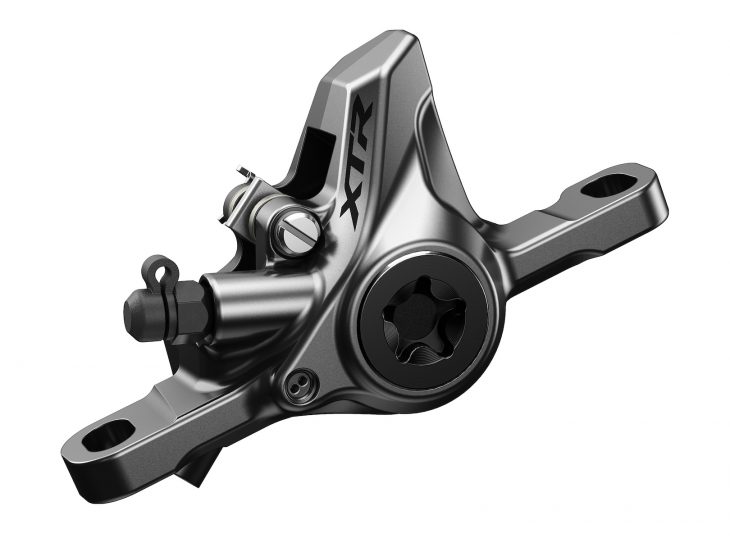
There’s also a new 2-piston calliper, which like the 4-piston model, is made from alloy and uses a high rigidity brake hose for better brake feel. This new lightweight calliper doesn’t carry over the current XTR/XT/SLX/Deore pad shape though, instead it moves to the same pad shape as used in Shimano’s road disc brake callipers, such as the latest Dura-Ace and Ultegra models. Both XTR brakes will have resin and metal compound pads available, with the 2-piston calliper also offering a brake pad option that features titanium-backing plates for all the trickness.
Speaking of trickness, Shimano has updated its Ice Tech rotors, with a little bit of weight shaved off and an increase in heat dissipation qualities.
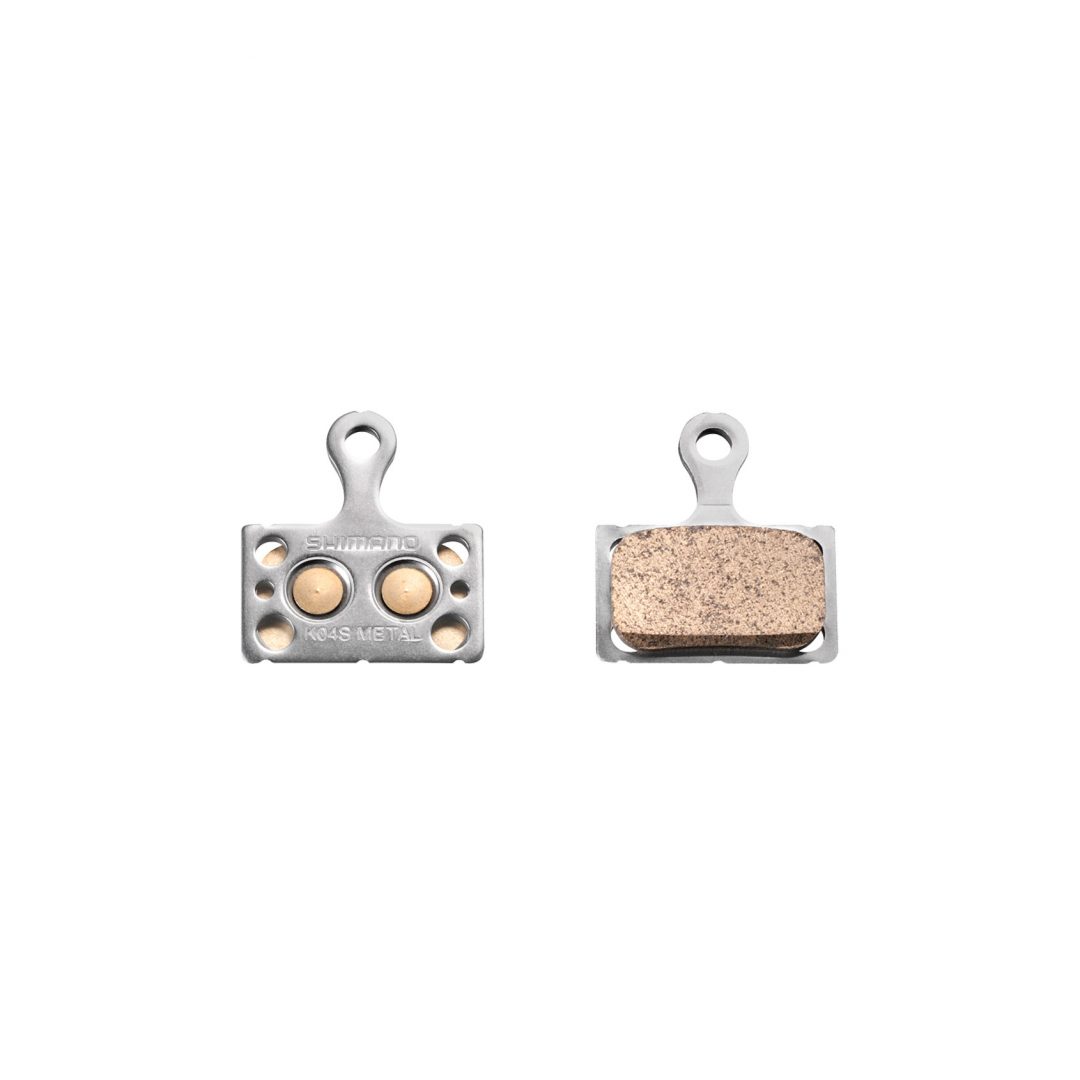
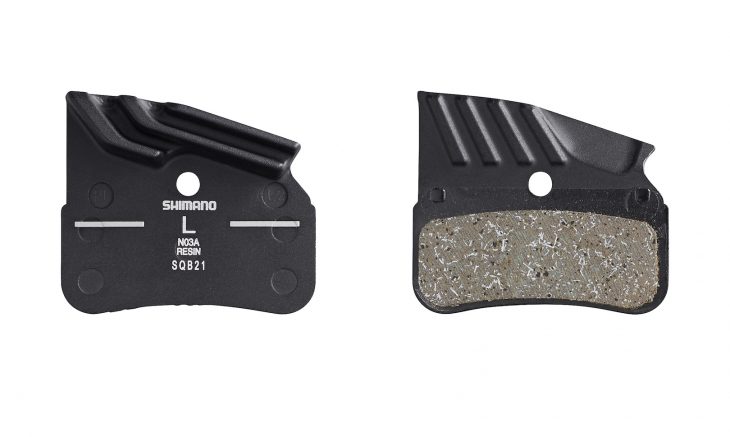
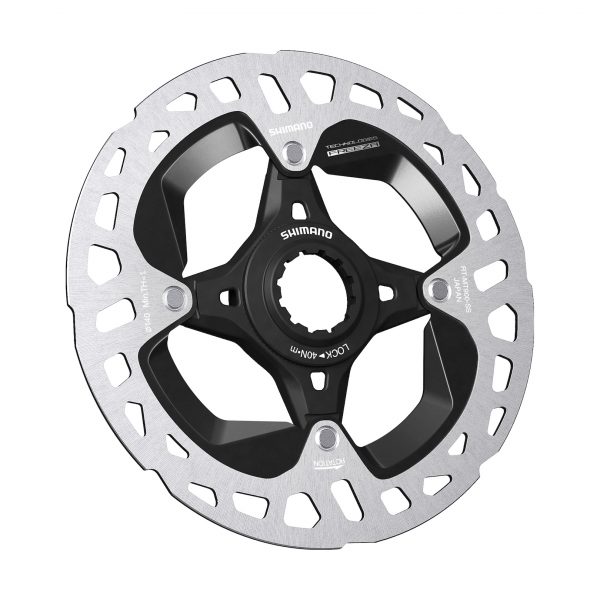
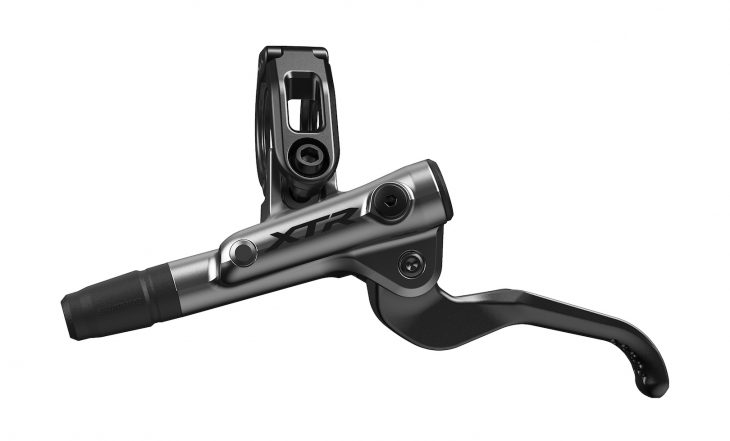
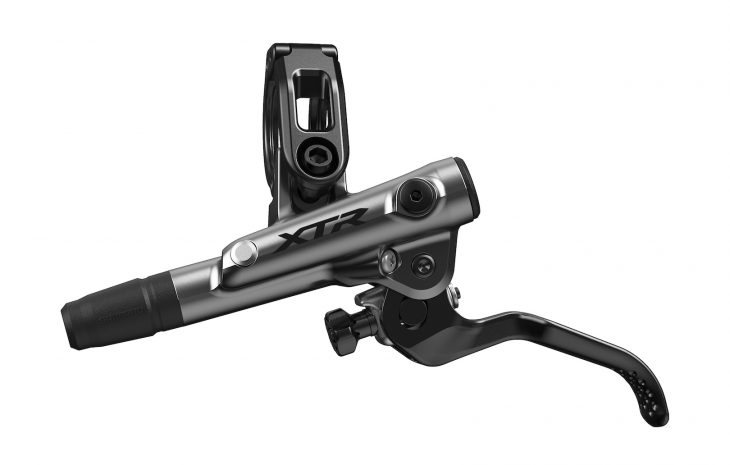
At the lever end, the overall shape remains much the same, and they’re still running on Mineral Oil, but the bar clamp repositions to the centre of the brake lever’s body. For added stiffness when you’re really pulling on the anchors, the outer edge of the brake lever body braces against the handlebar. There are two lever versions; a lighter brake lever for the 2-piston brake callipers (shown above), and a bigger version for the 4-piston callipers (shown below). The chunkier one comes with tool-free reach adjustment, Free Stroke adjust, and the Servo Wave roller cam for faster pad movement when tugging on the lever.
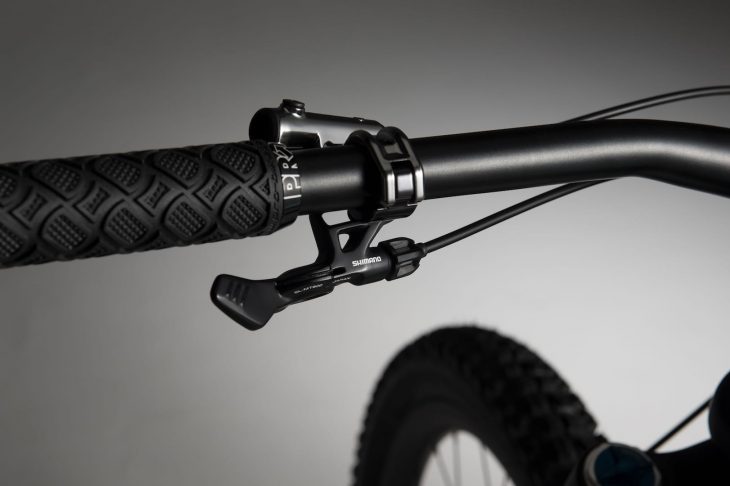
Shimano XTR MT800-IL Dropper Post Lever
Only available in an I-Spec EV option to mount directly to the new XTR brake lever, the new MT800 dropper post lever is designed to work with the PRO Koryak dropper post, or any other cable-activated droppers on the market. It certainly looks clean, and there’s a similar amount of lateral and angular adjustment as the I-Spec EV shifter.
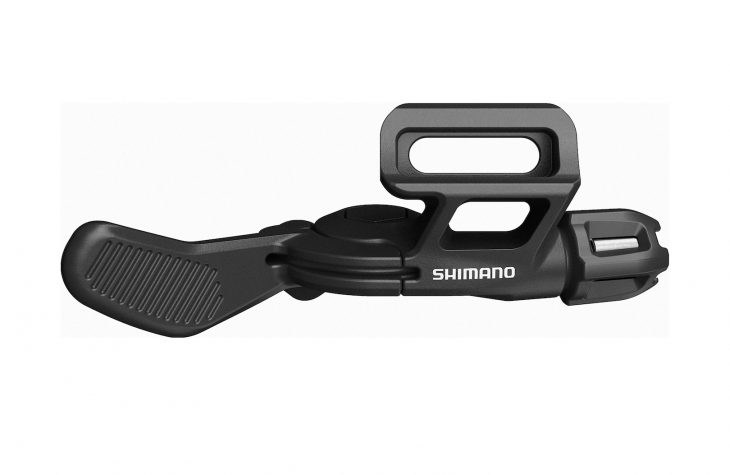
Right, so there you have it – new XTR! We’ve put a few questions to Shimano regarding compatibility, claimed weights, and UK pricing, which we still are yet to confirm.

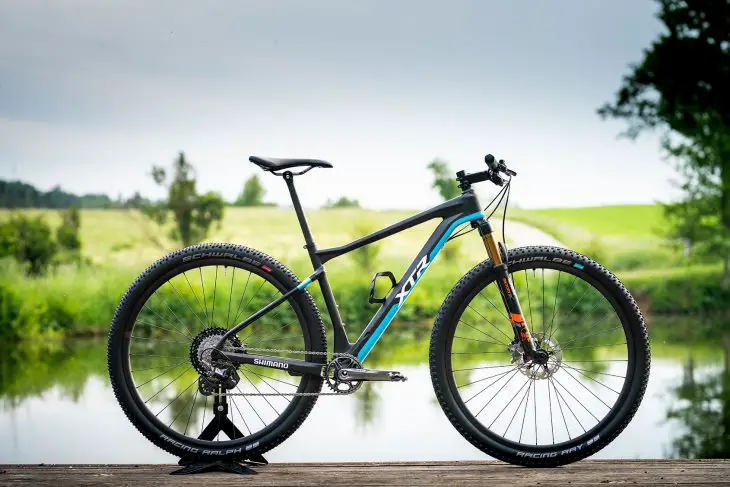
While we’re waiting for those responses; what do you guys think of the new M9100 XTR groupset? Do you have any questions you’d like us to ask Shimano? Tell us what you think in the comments section below!
Comments (14)
Leave Reply
Post Comment
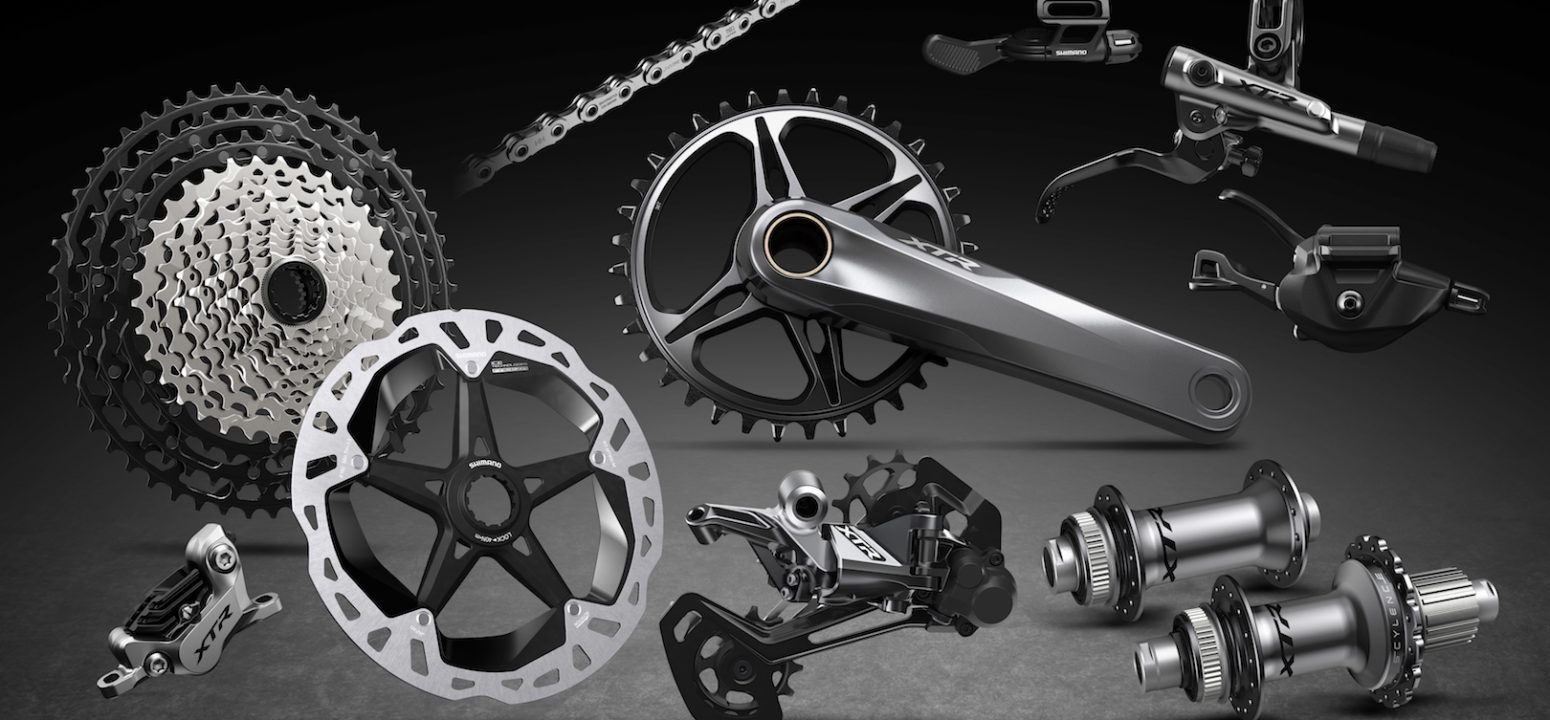
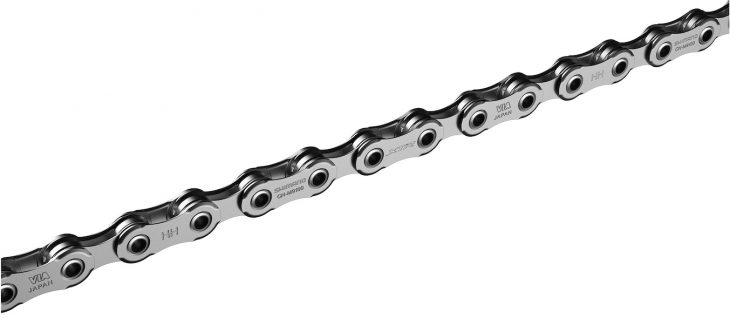

While i’m all for progress, this seems a right hotch potch approach. Trying to be all things to all people but ultimately too many variations.
I’m all for progress too, but I remember the good old days when you could mix and match various road and MTB groupsets.
But reading this, I’m confused as to which parts of this same groupet are comptable with which other parts of the groupset!?
The 11 speed hub/cassette isn’t compatible with any existing Shimano 11 speed parts (road or MTB), but IS compatible with the new 12 speed shifter, but only if it’s been switched to 11 speed?
Isn’t this a bit bonkers?
Can you ask Shimano if I can have a free groupset?
and the direct mount is gone!
I don’t think the cassette choices are quite as odd as made out here – obvs close and wide ratio 12 speed make sense, and the 11 speed is just a wide ratio with the largest sprocket omitted to save weight. Same spider etc so fits on the standard hubs…but then a bright spark thought they could do a custom hub with wider flange spacing just for this cassette…
And I expect the cassette body isn’t significantly smaller diameter if working with DT Swiss hubs – instead looks like following One Up approach of hanging the 10 tooth off the 12 tooth sprocket – quite sensible really.
PS just to be perverse, I think this all looks great – Shimano finally doing 1x properly, using a cassette design which will suit cheaper cassettes than SRAM XD, and looks like getting some brakes which work better than old XTR too.
Shimano has killed Di2 now? Or is that still to be launched later?
Oh dear. When will it stop? At 13? 14? 15 gears in the back?
Even with 11 speeds, derailleur hanger alignment is critical. With 12, you often see the disastrous results of a tiny alignment issue cascading into total drivetrain and drive side spoke apocalypse, as your derailleur takes it all out.. Yes, it does bring more money for the shop, but it is slight madness, in my humble opinion. These days, you should always ride with a derailleur hanger alignment tool, it seems. And yeah, I straightened 3 hangers today at the shop, all from Sram 1×12 riders “having some trouble with my gears”…And sold a couple of “just in case” mech hangers too.
I am still happily riding 1×9 setups, and they are much less of a hassle. I guess I have become one of those retrogoruch mechanics…
^grouch 🙂
Hi, the crank arms look familiar. XTR M985 ?
52mm chain line isn’t great imo. 49 just about gets you straight in the middle of an eleven speed block, never mind a 12. Also, why the burning need to redesign everything for a 10t sprocket? Keep the 11t, reduce the gap between some of the big cogs, keep existing free hub compatibility, run a bigger front ring if needed.
So, Shimano finally admit SRAM got it all right 5 years ago, and for extra fun disown their previous 1×11 attempt. Don’t like the look of the amount of alloy in the cassette unless they’re making the alloy section available as a repair cluster. The cassette system does look like it should be possible to build cheaper cassettes than the engineering heavy SRAM approach. I suspect there will be more to it than this. A head to head comparison will be interesting. Also interesting that they’ve essentially pinched the DT ratchet system.
I’d read elsewhere that the road flatmount calipers were being introduced. I imagine this was confusion based on the pad reuse. I’m glad this isn’t the case as that would really have been pitchforks.
Overall I’m not really seeing anything here to tempt me away from XD. Nice to see Shimano actually gives a toss about traditional bikes though. I imagine Di2 is coming to this mid-cycle.
The freehub mechanism is pretty different to DT. The ratchets disengage altogether when freewheeling to reduce drag. Will be interesting ro see how it holds up.
Looks cool and no doubt will perform brilliantly. On the plus side, the old 11 speed stuff will have a price drop now.